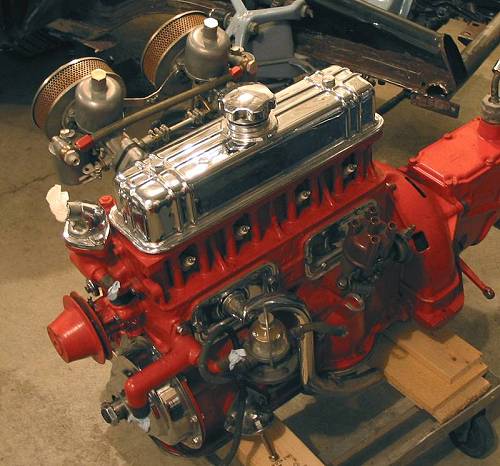
| 1961 PV544 Project - Update 10 | |
| In previous articles, you've seen photos of the original engine from our PV544. Specifically, an inline model B16 4-cylinder in "De Luxe" trim that made 85 HP and 87 lb.ft. of torque. See photo immediately below: | |
 |
|
A "New" Powerplant I had given serious consideration to having a later version of this engine series built to power this project. That is, a Volvo B20 engine. To get decent output from that engine ("decent" being relative obviously), it appeared that it could have gotten quite expensive and might push the engine where it might not want to go - unless you wanted to go racing. A search for alternatives began. An obvious consideration for many would be a smallish pushrod V8. That was definitely an option and it has been done in these cars. However, the length and the width of a 90 degree "V" push the boundries of fit a bit too far without making other sacrifices and compromises. And, of course, there's additional front end weight. The length of all small block V8s would require that the firewall configuration be changed from slanted forward to flat and would push the bellhousing further into the car and alter footroom. If it was to be an automatic transmission application, footroom might not be an issue but we want a manual transmission. After some looking around, it came to my attention that GM had made a 3.4L performance version of their 60 degree V6 as a direct replacement for RWD 2.8s, 3.1s, etc. from 1999 through 2005. Knowing virtually nothing about the GM 60 deg. series, I continued with the research and found that they have a huge performance following in both the iron and aluminum head versions. If you're interested in the lineage of the GM 60 deg. V6, check out this Wikipedia page. Subsequently, I located a fellow who had taken a stock 3.1 out of a Camaro and put it in a PV544. I was able to contact him and we had a few chats about his install. He was extremly happy with the performance and the installation but was sorry that he didn't use the GM performance version (or perhaps it wasn't available when he did the swap). This was looking to be a great possibility for this project. Now to locate and engine... As it turned out, it really wasn't all that difficult as my good friends at Timmins Garage were able to locate a brand new GM Performance Parts 3.4 for me. Here's some additional info from a GM spec sheet: |
|
|
|
| It should be noted that the output shown above is achieved with stock intake, induction (2 barrel or throttle body, exhaust manifolds and exhaust. We don't plan on using any of those. More on that in a future update. This is what it looks like as delivered: | |
 |
|
Resources Next: Swinging the engine & tranny in for inital fitment. |